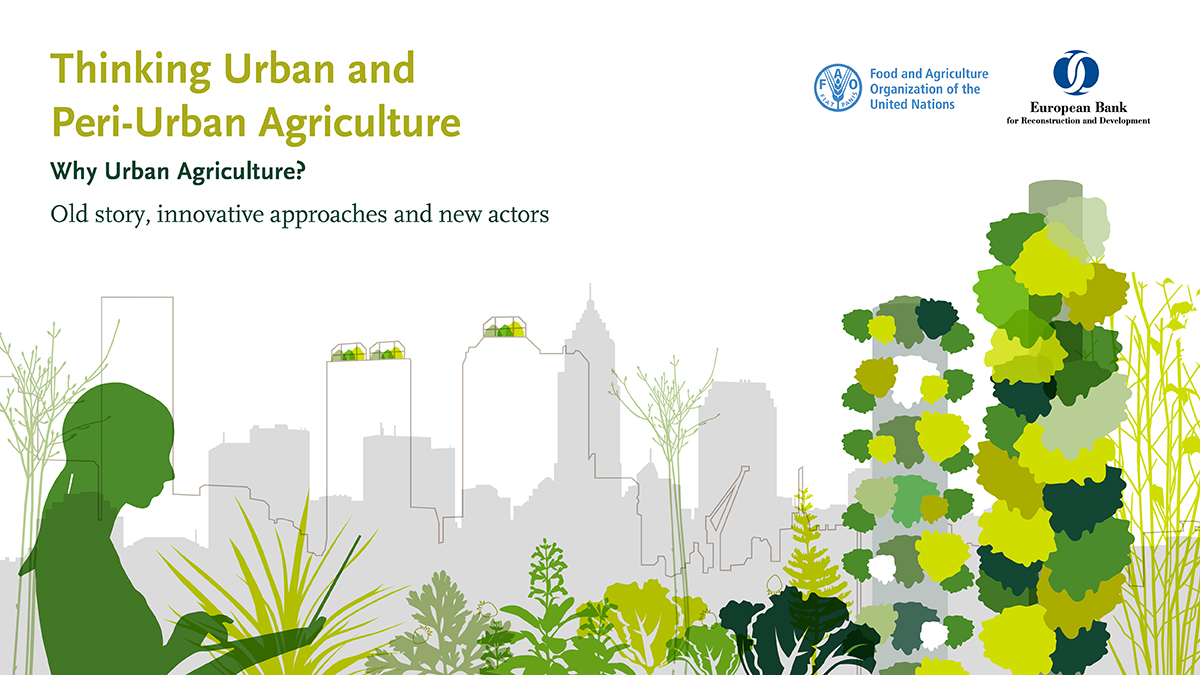New role for urban farming

The European Bank for Reconstruction and Development (EBRD) and the Food and Agriculture Organization of the United Nations (FAO) today launched the first out of nine e-dialogues in the series dubbed: ‘Thinking urban and peri-urban agriculture’.
These e-dialogues are to identify future commercial urban farming opportunities and initiatives, as part of an ongoing EBRD-FAO technical package to support the agribusiness sector during the COVID-19 crisis.
Agri-food sector COVID-19 response
In October 2020, the organizations boosted their FAO-EBRD cooperation in response to the challenges resulting from COVID-19 pandemic, with a USD 3M injection to provide technical assistance to the agrifood sector in the EBRD’s regions. A global review was commissioned to identify promising areas for urban and peri-urban agriculture investment highlighting technologies, emerging business models and their viability, opportunities and risks.
Already, more than 600 market players and influencers have been identified globally. These are from both the public and private sectors, including urban farms, technology providers, research centers, real estate investors, retailers and sectorial associations.
‘Urban farmers, investors, input providers, researchers, architects, public actors and experts in the sector will be part of a global discussion on urban and peri-urban agriculture, its sustainability and the various opportunities arising for entrepreneurs, public administrators and citizens,’ said Iride Ceccacci, Head of Agribusiness Advisory, EBRD.
The urban agriculture debate
The changing climate and rapid urbanization pose an urgent question on how to feed the burgeoning population in the cities, which is projected to consume more than 80% of the food produced by 2050. Advanced urban agriculture may have the potential to reduce food system vulnerabilities and food loss, while contributing to a reduction in the overall footprint of production and distribution. The debate thus continues as to whether urban agriculture can enhance food security and sustainability of food systems in cities.
Our cities are evolving and new farming technologies appear to be among the drivers of change. The emerging sector requires new approaches and new partnerships with other sectors such as technology and IT, but also real estate developers, architects and local administrations.
Already, there are various technologies in urban farming and their uptake is growing exponentially. Hydroponics, aeroponics, aquaponics as well as LED lighting, remote management apps, and robotics are becoming the new normal in commercial urban farms.
From the initial global review by FAO, Europe and North America are leading the way in urban agriculture, particularly with new research and technologies. However, interesting growth is also observed in Asia, East Europe, the Caucasus (such as Azerbaijan and Georgia), Middle East (Lebanon and Jordan) and Central Asian countries (Kazakhstan).
The review so far reveals that 67% of the identified urban farms grow leafy greens, in combination with herbs (56%), vegetables (43%) and/or micro greens (23%). 60 percent of the identified farms target exclusively local markets while 40% sell nationally and/or internationally.
‘This first e-dialogue will be an opportunity for FAO and EBRD to share the initial results of the FAO’s ongoing global review on urban and peri-urban agriculture; a structured and inclusive technical discussion on urban and peri-urban agriculture.’ said Jacopo Monzini – one of FAO’s Senior Natural Resources Management Officer.
The e-dialogues will help in forming a community of practice where urban farmers, investors, institutions, input providers and the academia can discuss and exchange knowledge on some key aspects of the sector like its sustainability, logistic issues, investments and human resources.
